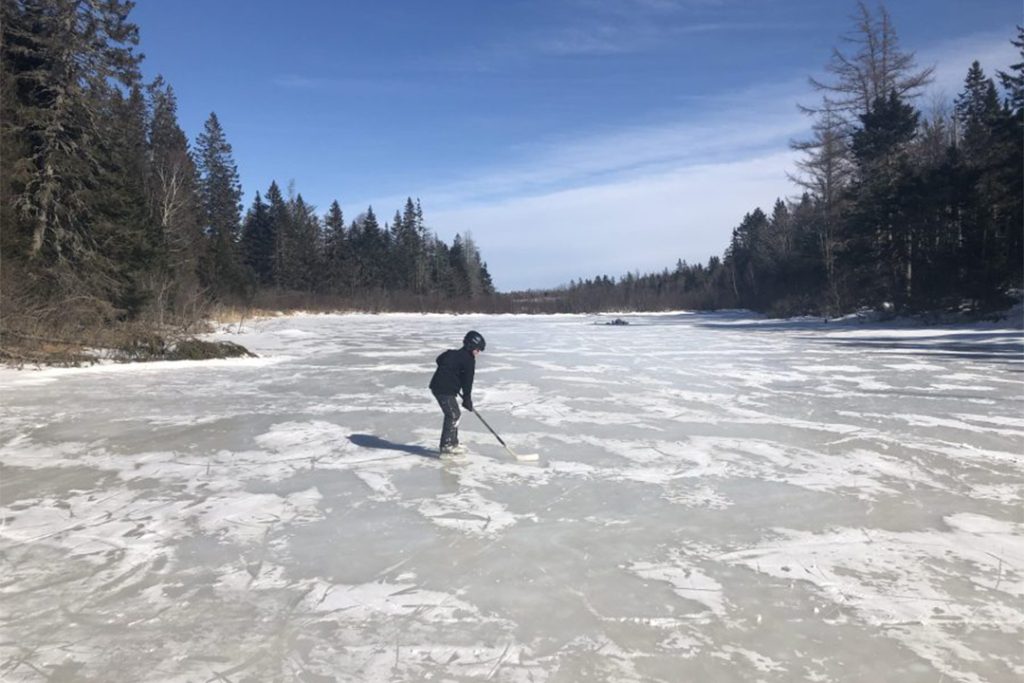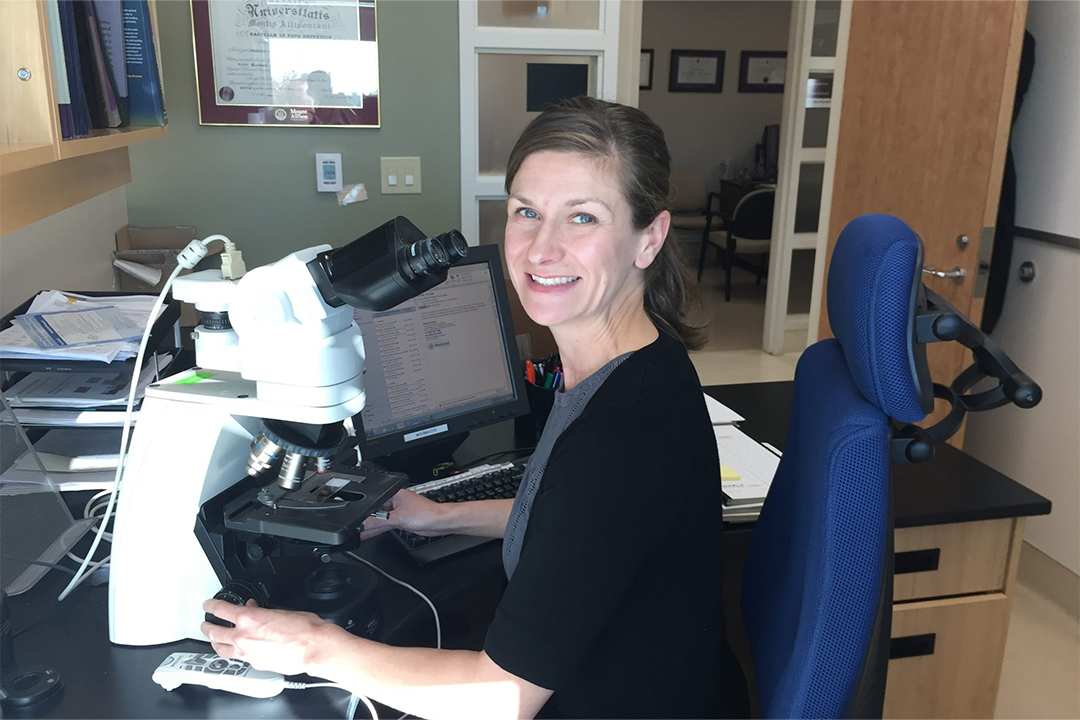Anatomical Pathologist Dr Jaime Snowdon and her whānau have opted for quite the change of scenery recently. The Snowdon’s have temporarily traded their farm life in New Brunswick for the bright lights and shiny microscopes of Christchurch.
Dr Snowdon sat down with us to talk about home, what got her into the profession, and her interest in digital pathology.
Kia ora Jaime, it’s great to have you here in Aotearoa. Before we get into the work side of things, can you tell us a little bit about home?
So, where we are in Canada is in New Brunswick on the East Coast. We moved to a little hobby farm. We have a big garden, raise our own meat and keep chickens, that sort of thing. We’ve also got trails and woods out the back of our property, so I guess we’re pretty outdoorsy. Horseback riding, walks and that kind of stuff.
Since we arrived we’ve seen a bit of Arthur’s Pass, and done some of the tracks around Mt Hutt. In saying that my kids range in age from eight to sixteen and they don’t always love the longer walks. We drag them out like every weekend and every week we’re like, why are we doing this? Regardless, New Zealand lends itself well!
What got you interested in Pathology as a profession?
Right from the beginning my dream was always to be a physician. Not because I felt like I was a healer, but because I like science. For me, coming from a family where no one had gone to university, becoming a doctor was a big ambition.
In Canada, we do four years of university, and then you can apply to medical school after that. I came to New Zealand after undergrad to do a working holiday with my then boyfriend, but now husband, and then went back for medical school in Halifax.

At that stage I didn’t know anything about pathology. I feel like that is pretty common unless you’re in medicine or healthcare. But as some people say Pathologists are like the doctor’s doctor. We try to understand at the cellular level, and even more so now at the molecular level, the basis of disease. What is making people sick.
Where a surgeon would do five years of surgical training, we do five years of anatomical pathology training after medical school. We learn how to recognize under the microscope, the changes that occur in tissue when somebody is sick.
You mentioned earlier that you consider yourself a generalist, but you do have a special interest in digital pathology. Can you tell us a little bit about that?
Well in New Brunswick it’s very rural, and the hospitals are separated by hundreds of kilometres. It’s hard to recruit people who are not from that area. It’s not like Vancouver or Toronto.
It’s a bilingual province, meaning French and English and there are some parts that are very Francophone. To recruit pathologists who can speak French, and who want to stay has been a challenge. Those who we could get, were often overseas medical grads who used the area as a steppingstone in order to get jobs in the main centres and they would only stay a year or two.
So instead of recruiting people who we know were going to leave, we put scanners in those hard to staff centres. Scanners cost hundreds of thousands of dollars, but so do pathologists!

All of the labs remain, you still need the expertise of the technicians to prepare the samples. But instead of handing the slides to people, they scan them. Then pathologists anywhere in the province can read those slides remotely. Everything is done on the computer. Before I moved, I could sit at home and cover pathology for a lab that was 500 kilometres away.
We also had smaller scanners that can do one or two slides for when you need a quick answer. It’s called a frozen section or a quick section and that’s when a surgeon wants an opinion during surgery. It’s important to them to have the answer right away because it affects their surgery, and it’s a service they couldn’t go without. So even that was possible.
The Awanui team of specialist pathologists, along with scientists, technicians, phlebotomists, couriers and shared services personnel deliver a world-class service that together collects, analyses and reports over 7 million patient results annually.
